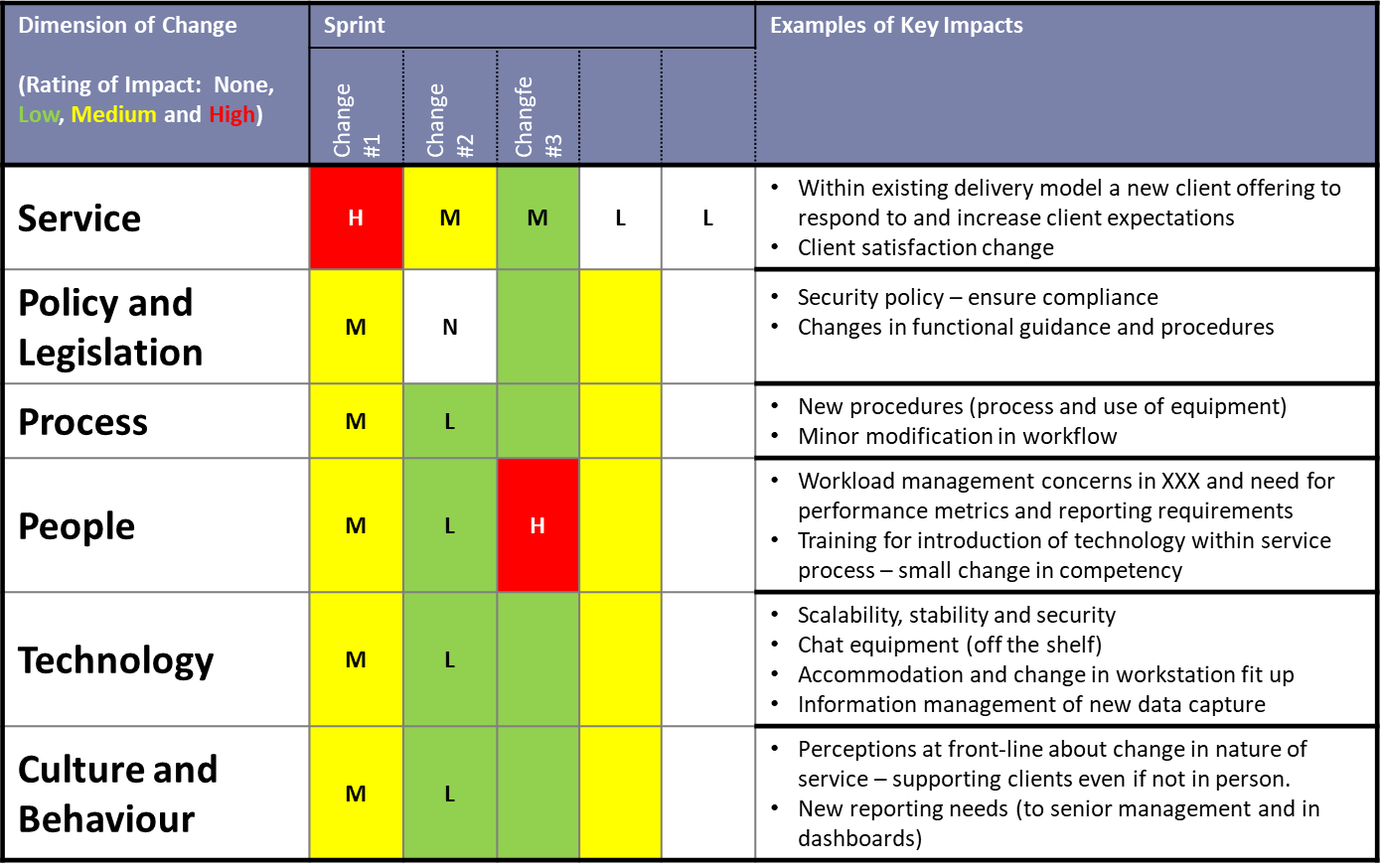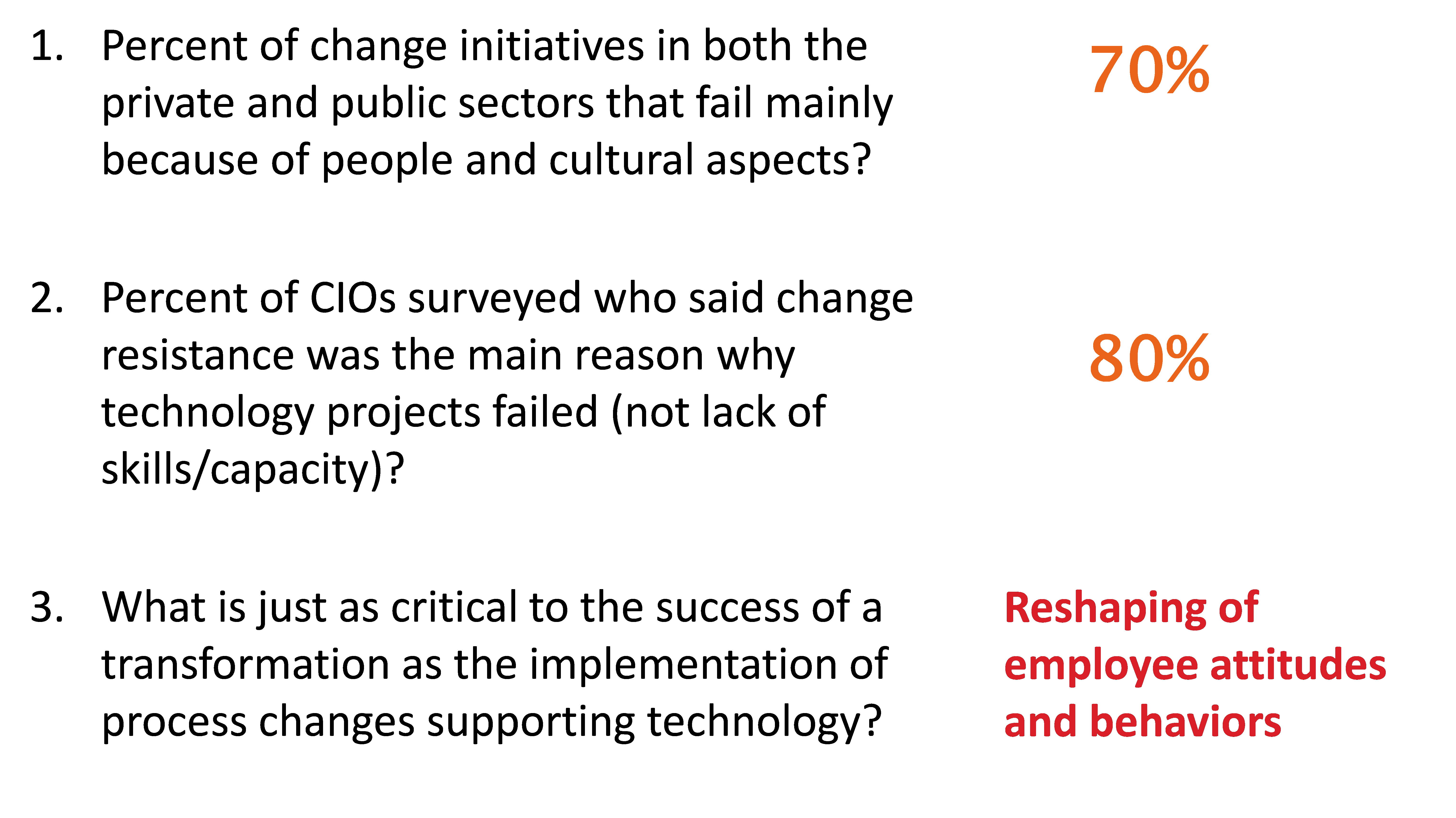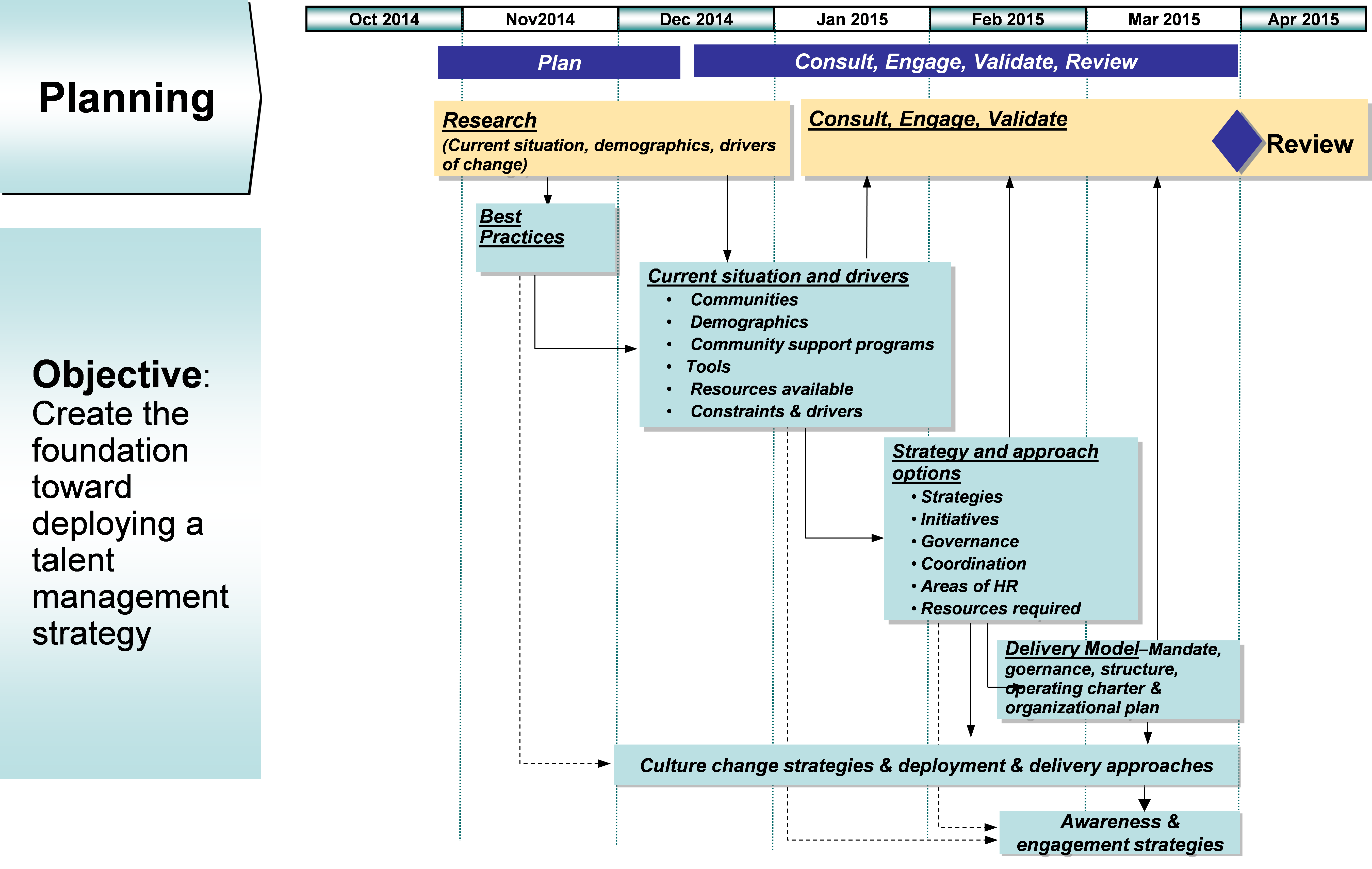The Digital Focus to Service Design
(Driving client-centred service)
To become part of the management culture of any enterprise, it is imperative that change management be embedded as a discipline within management processes. The goal is to provide completed answers to the following questions: How can change across the enterprise be better achieved? How can predictive tools be meaningfully leveraged to minimize failures in readiness? How can we bolster a culture of transformation and innovation?
We will answer and provide opportunities to consider the best approaches and tools available to help you to drive an effective enterprise approach where change management works hand and hand with your project management team.
- Use of internet for transactions will increase with new age cohort (Age 65 – 23.04%, 45-64 – 56%)
- Fivefold increase in Internet real time support – online chat is replacing telephone
- 79% of consumers willing to share personal data for ‘clear personal benefit’
- Freelance (on-demand) workers is fastest growing part of workforce – 8.1% growth vs. 2.5% for total workforce
| Voice of the Client | Principles for Service Design | |
|---|---|---|
| Satisfaction | Comes from an outcome (“I got what I needed”) in a timely manner | One-time resolution through dynamic, personalized and compassionate service |
| Client contact | Multiple contacts to apply for benefits and address issues | One stop access to service (no matter the channel). Complete and updated client information in a single “view” |
| Online channel | Older clients are skeptical, the younger (next) cohort feel it is not enough | Online self-service tools are the default priority for improvement |
As society transacts online, and integrated data is intelligently employed, the relevance and value of services will be judged on the readiness to support the coming large wave of more technologically competent clients. Confidence and trust in services hinges on online speed, accuracy, protection of data, and access anywhere.
Client-centrism is at the core of any service strategy: Ensuring that services are responsive to client needs and tailored to evolving expectations. Design and prototyping of improved service address essential pain points of clients in receiving service. Client-centric service outcomes require internal ‘integration’ to deliver simple, seamless and accessible service across all modes of service.
Why? Value of an investment in change management.
Who? Which stakeholders must be engaged and supported sufficiently to put every odd of success in your favour when things “Go Live”? Our experience will help you to accelerate front-line and middle management action to create positive energy for change.
How? How can leaders be supported to ensure that the pace of change is managed well? How does change management integrate with project management?
Where? What type of engagement structures work better than others? What is meant by two-way dialogue?

Enterprise Change Management
(A Toolbox for Evidence-based Strategic Change)

Avoid key change risks by adopting consistent tools and approaches, building the organizational ‘reflex’ that minimizes risk aversion and silo-based decisions. Change management tools must address the endemic issues integral to inadequate technology and process adoption. The following are some human system symptoms that require constant leadership attention and evidence-based decisions:
• Cumulative impacts and pace of change
• Diffused leadership sponsorship (no responsibility or sense of shared accountability)
• Late Measurement of readiness
• Workforce / HR transition requirements
• Multiple initiatives impacting the same stakeholders
• Ensuring performance expectations and deadlines reflect capacity, dependency and achievability at an enterprise level
Visual analytics are crucial to this determination, using common language and evidence across a transformation agenda of projects.
Dashboards and measures integrated in project management and benefits realisation plans are critical.
Creating a Positive and Adaptive Workplace Culture
Transformation can create workplace stress when change is insufficiently managed through front-line engagement and senior level sponsorship. The absence of a planned and deliberate change approach raises the risk of breakdowns in relationships as pressure builds to meet timelines. Toxicity in workplace environments around relationships and conflict has negative effects on the wellness of the workplace, and ultimately on efficiency, trust in leadership, and attachment to mandate.
The principle and importance of organizational self-reflection is found in the mandate letters of several heads of department. Achieving greater organizational self-reflection requires embedding enhanced dialogue, skills / competencies, team-based self-management, and many other measures vital to changing operational behaviours and the dynamics of the workplace.
This is not contrary to security, but in fact can be shown to reinforce the principles and approaches of this model important to operational integrity and safety. Standards have been established internationally (Mental Health Commission of Canada, ILO, WHO, etc.) to encourage good practice and raise awareness.
In a federal government environment where community / social cohesion and purpose are integral to employee morale and productivity, the following types of leading indicators predict the likelihood of risks occurring in the breakdown of cultural cohesion and working relationships:
• Demands – such as workload and work environment.
• Control – a person’s individual influence over how their job is carried out.
• Support – from the organization; management and colleagues.
• Relationships – to reduce conflict and deal with unacceptable behaviour.
• Role – understanding of what the job entails; what is expected and needed.
• Change – how change is managed within the organization.

Competency-based Leadership
(Building a Committed Culture of Change from your Leaders)
Organizations face challenges related to increasing workload, the evolving nature of the work and demographic change. Corporate Risk Profiles and Strategic Plans highlight the need for talent management in order to address the potential shortage of Human Capital (Knowledge and Competencies), as well as the need for workforce and workplace renewal.
Generally, talent management has been defined as a system or strategy that addresses competency gaps, particularly in mission-critical occupations, by implementing and maintaining programs to attract, acquire, develop, promote, and retain quality talent.
A typical workplace is populated with separate generations of employees each with different talents, work styles and work experiences. The attraction and retention challenge is to uniquely assess individual needs and provide support through each stage of an employee’s professional career.
How can a meaningful leadership alignment strategy be developed?
Any leadership program will be guided by a roadmap as depicted in the figure at right.
Performance management is one key enabler of talent management, encouraging and guiding in the right behavours required of high performers. It should ideally be about team performance rather than one-to-one manager-employee discussions. The book by Eric Mosley, “Crowd Sourced Performance Review” emphasizes the need to change “one-way review processes into dynamic, collaborative systems that apply the latest social technologies.” Instead of a one-time annual evaluation of performance, managers and employees receive collective feedback from everyone across their company (organization). A performance management discussion should be their opportunity to best express workforce and workplace leadership.
Avoidance behavior is exhibited when employees and teams shy away from taking leadership in behavior adjustments, such as:
1) “He/she delivers, but….there is blood on the floor ” – Employees/managers who excel with work objectives, but are clearly not doing as well as a role model of behaviour.
2) “Great guy, but doesn’t deliver” – the opposite: poor work objectives and great role model. There is a demonstrated need for efficient and practical tools to bring structure, discipline and regularity to talent and performance management. The following list is a starting point for a strategic discussion of priorities required for a multi-year talent management strategy.
• Strategy – a framework of objectives and priority funded initiatives
• System – Access to HR Systems to track employee competency information
• Process – Communicating an integrated process and organization of delivery
• HR Service Delivery – Changes to the organization of HR
• Planning – Improve forecasting of talent shortages through integrated business-HR planning
• Organization – Develop the right organization structures
• Governance and Oversight – Ensure talent management is a part of discussions at all levels of management
• Tools – Practical and usable talent plan, Onboarding tool, Manager led succession plan
• Measurement (What gets measured gets done)
The great opportunity presented by talent management is to achieve demonstrable benefits in the short and long-term. A well-defined and governed strategy for talent management will make this a reality.
